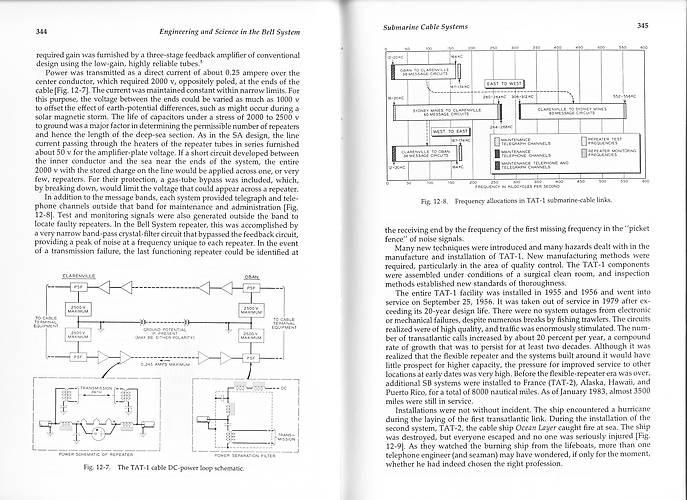Bell System Engineering - Submarine cables - pages 344-345
By Steve McCollum; posted January 7, 2012
View Original: Click to zoom, then click to magnify (3503 x 2548) 2280KB

|
Note the comment about the system being designed to withstand 1000 volts of earth-potential difference between opposite sides of the Atlantic! Quoting directly from the book: Power was transmitted as a direct current of about 0.25 ampere over the center conductor, which required 2000 v, oppositely poled, at the ends of the cable [Fig. 12-7]. The current was maintained constant within narrow limits. For this purpose, the voltage between the ends could be varied as much as 1000 v to offset the effect of earth-potential differences, such as might occur during a solar magnetic storm. The life of capacitors under a stress of 2000 to 2500 v to ground was a major factor in determining the permissible number of repeaters and hence the length of the deep-sea section. As in the SA design, the line current passing through the heaters of the repeater tubes in series furnished about 50 v for the amplifier-plate voltage. If a short circuit developed between the inner conductor and the sea near the ends of the system, the entire 2000 v with the stored charge on the line would be applied across one, or very few, repeaters. For their protection, a gas-tube bypass was included, which, by breaking down, would limit the voltage that could appear across a repeater. |